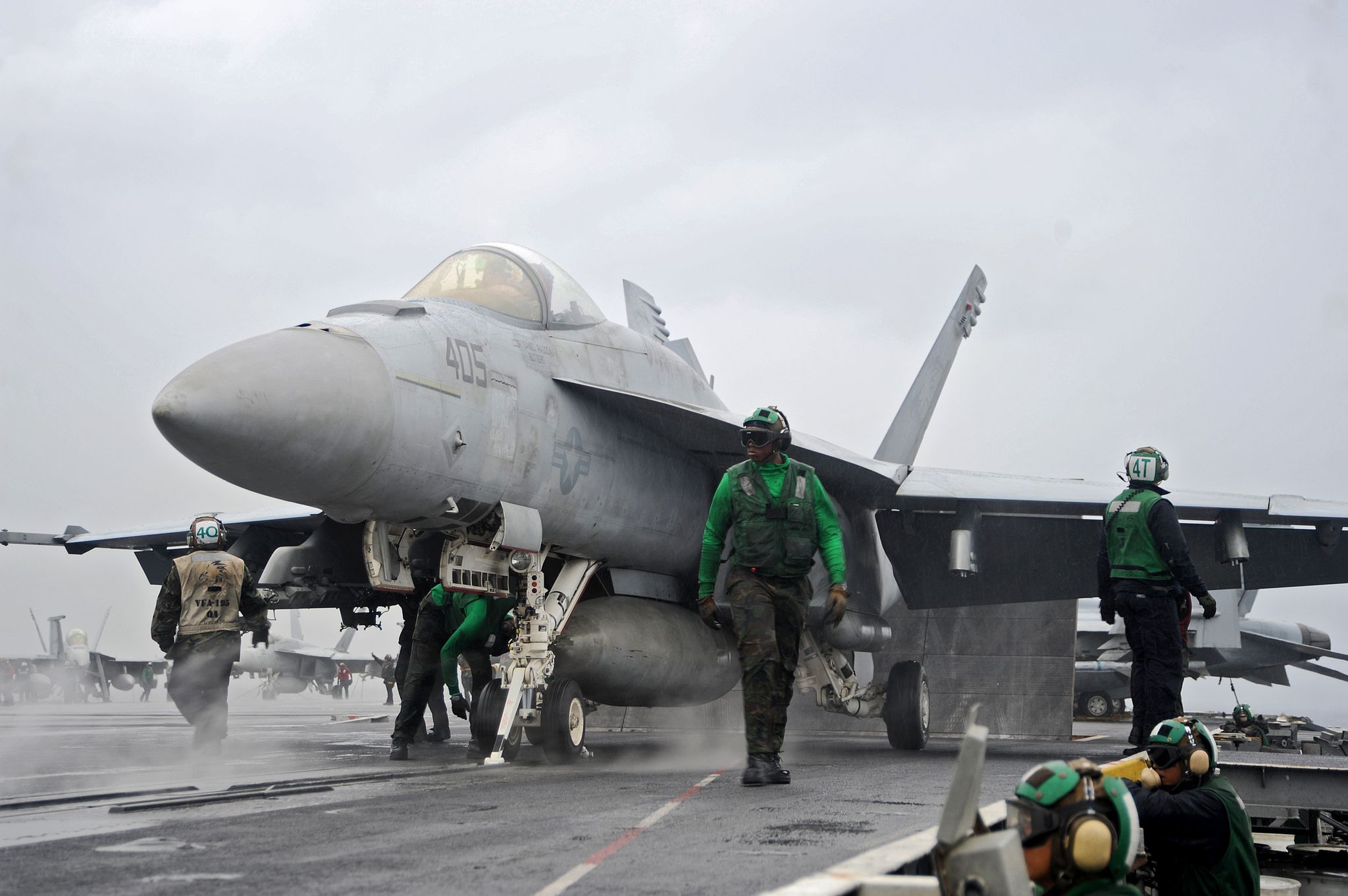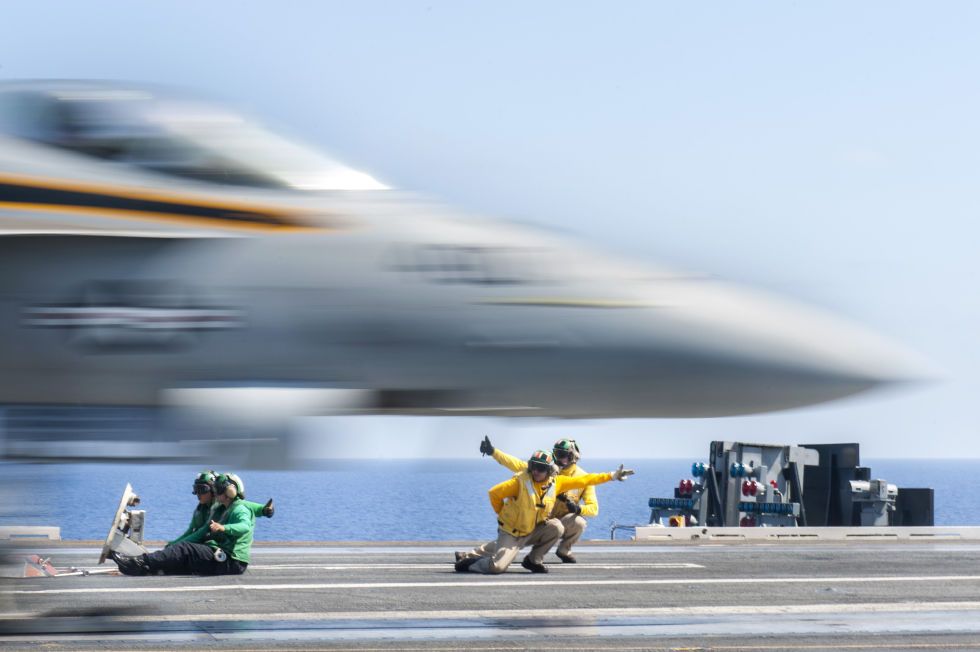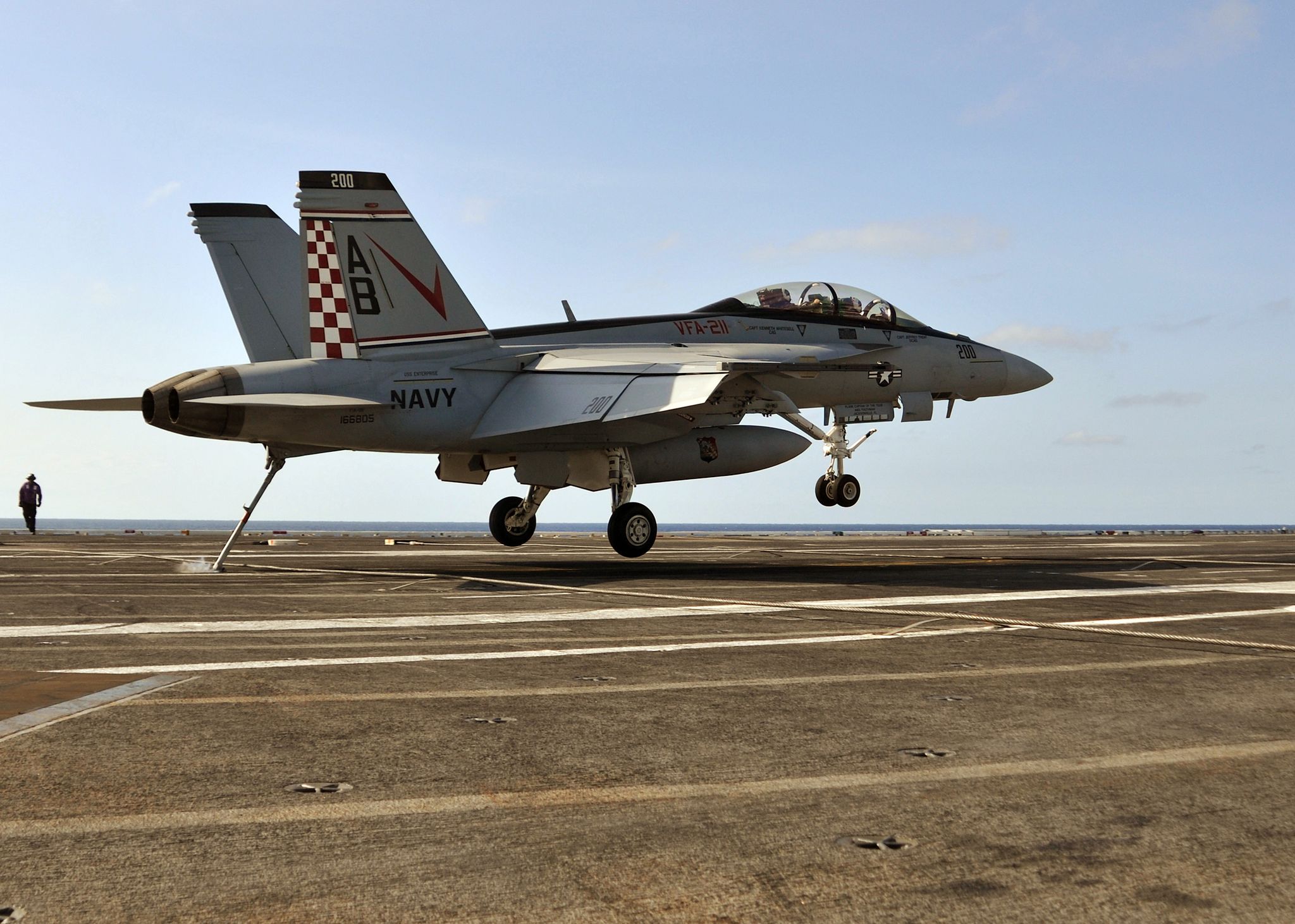On the first day of the Persian Gulf War, four F/A-18Cs took off from the USS Saratoga to bomb an airfield in southwestern Iraq. These F/A-18s were heavy. Each carried four MK 84 2000-lb. bombs, two AIM-7 Sparrows, two AIM-9L Sidewinders, and a centerline drop tank. As the Hornets from VFA-81 (the “Sunliners”) made their approach, an E-2 Hawkeye airborne control aircraft passed word to the pilots: Two Iraqi MiG-21s were on the hunt.
The MiGs turned to intercept the Hornets, closing at 1.2 Mach. While two of the Hornets stood off, Navy Lieutenant Commander Mark I. Fox and his wingman, Lieutenant Nick Mongilio, turned into the enemy. Fox locked onto one plane, firing both a Sparrow and a Sidewinder, while Mongilio launched a single Sidewinder at the other. In a heartbeat, both Iraqi planes were destroyed. A mere 40 seconds passed from the initial E-2 warning to downing the Iraqi jets.
Those two Iraqi MiGs are the only aerial victories for the F/A-18 Hornet/Super Hornet during its decades of service—no surprise, since the opponents in America’s recent conflicts lacked the air power to challenge the U.S. Even so, the swift manner of success showed what the F/A-18 could do and why it was built.
Hornets weren’t always the Navy’s first choice. But they became the go-to choice for decades.
Strike Fighter
The first thing to notice about the Hornet is the “F/A” in the F/A-18 designation, meaning the jet was designed to be both a fighter and an attack aircraft. This plane was a way for the Navy to replace multiple single-mission aircraft with a jet that could do it all, but it was a long time coming.
The aircraft carrier-based fighter planes of World War II, such as the Grumman F6F Hellcat and Vought F4U Corsair, could carry bomb loads as heavy as the dive bombers of the day, successfully combining fighter and attack capabilities into a single aircraft. But the low power-to-weight ratio of these early jets forced the U.S. military to go in a different direction. The carrier aircraft of the 1950s and ’60s tended to be specialized fighter or attack airplanes.
The legendary F-4 Phantom of the Vietnam War era demonstrated the potential of a fighter/attack airplane. Even so, the Navy’s concern for air superiority and defending its carriers from enemy aircraft led it to order the Grumman F-14 Tomcat in 1969. The Tomcat was a good plane, but an expensive one. As a result, the Navy was directed to seek a cheaper alternative by adopting one of the competitors from the Air Force’s Lightweight Fighter Program.






